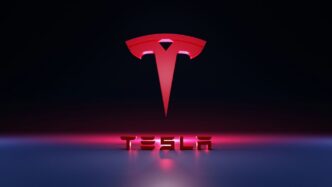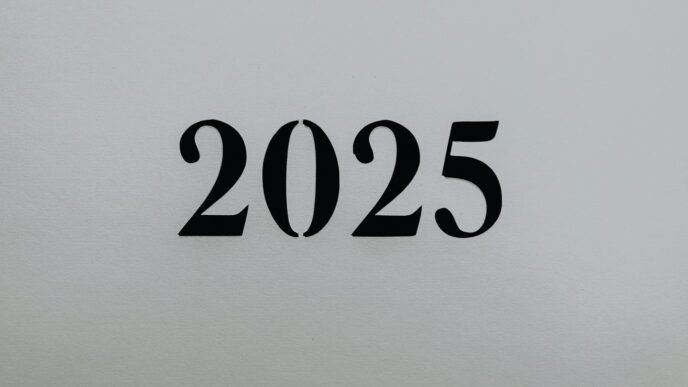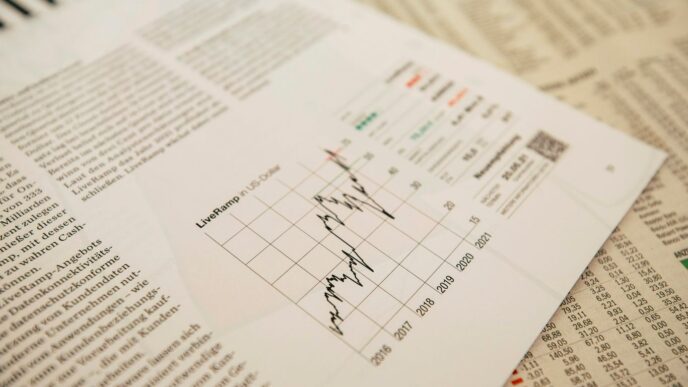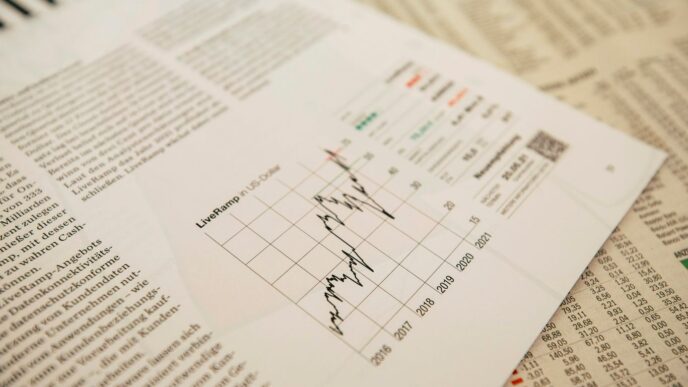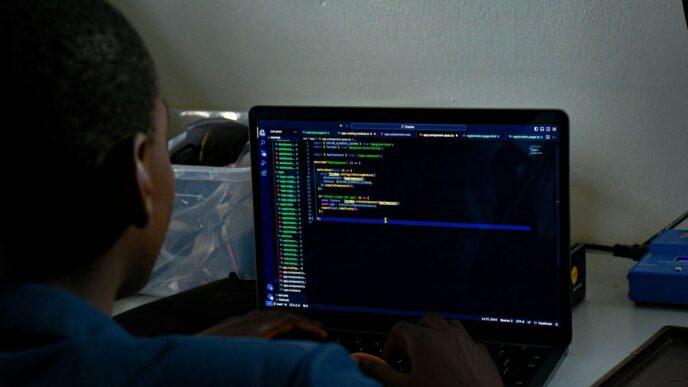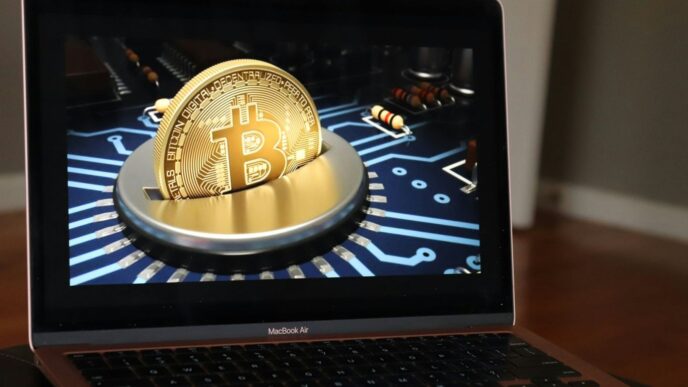You’ve probably heard the term ‘blockchain’ thrown around a lot lately, especially with all the buzz about things like Bitcoin. But what exactly is blockchain in simple words? It can sound super technical, like something only computer experts would get. Don’t worry, though. This guide is here to break it down for you. We’ll explain what blockchain is, how it works, and why it’s becoming such a big deal in our digital world. By the end, you’ll have a clear picture of this important technology.
Key Takeaways
- Blockchain is basically a shared digital record book, but it’s different from regular databases because of how it stores information.
- It keeps data in ‘blocks’ that are all linked together using special codes, making it hard to change anything once it’s recorded.
- Even though it’s famous for handling cryptocurrency, blockchain can actually store all kinds of information, not just money stuff.
- Many blockchains, like the one Bitcoin uses, are decentralized. This means no single person or group is in charge; everyone on the network shares control.
- Because of how it’s built, information put on a decentralized blockchain can’t be changed. So, for something like Bitcoin, every transaction is permanently saved and anyone can see it.
Understanding What Is Blockchain In Simple Words
Defining Blockchain Technology
Okay, so what is blockchain? It sounds super complicated, but the basic idea is pretty straightforward. Think of it like a digital record book, or a digital ledger, that everyone can share. Instead of one person holding the book, copies are spread across many computers. This makes it really hard to cheat or change the records, because you’d have to change them on all the computers at the same time. That’s the core of blockchain’s security.
Blockchain As A Digital Ledger
Imagine a shared Google Sheet. Everyone with permission can see it, and when someone makes a change, everyone else sees it too. Blockchain is similar, but with some key differences. Every "transaction" (like sending money or recording a contract) is added as a new entry. These entries are grouped into "blocks," which are then chained together chronologically. This chain of blocks forms the blockchain. Because everyone has a copy, it’s super transparent and hard to mess with.
The Immutability Of Blockchain Data
One of the coolest things about blockchain is that once data is recorded, it’s really, really hard to change. Each block contains a "hash," which is like a unique fingerprint of the data in that block. If you change even one tiny thing in the block, the hash changes completely. The next block in the chain contains the hash of the previous block, creating a link. So, if you try to tamper with a block, it changes its hash, which then invalidates all the subsequent blocks. This immutability is what makes blockchain so secure and trustworthy.
How Blockchain Technology Operates

Okay, so you know what a blockchain is, but how does this whole thing actually work? Let’s break it down without getting too lost in the weeds. It’s like watching a cooking show – you don’t need to know how to build the oven to bake a cake, right?
The Role Of Cryptographic Keys
Think of cryptographic keys as your digital ID and signature. Each user has a pair: a public key (like your email address) and a private key (like your password). The public key lets others send you information, and the private key lets you prove it’s really you sending information or authorizing a transaction. It’s all based on some pretty complex math, but the important thing is that it’s super secure. If you lose your private key, it’s like losing the only key to your house – you’re locked out!
Peer-to-Peer Network Functionality
Blockchain networks are peer-to-peer (P2P), meaning there’s no central authority like a bank controlling everything. Instead, many computers (nodes) all over the world maintain a copy of the blockchain database. When a new transaction happens, it’s broadcast to this network. Each node verifies the transaction using those cryptographic keys we talked about. If enough nodes agree the transaction is valid, it gets added to a block. This decentralized nature is a big part of what makes blockchain so secure and resistant to censorship.
Recording Transactions On The Chain
Once a transaction is verified, it gets bundled into a block with other recent transactions. This block is then added to the existing chain of blocks. Each block contains a "hash," which is like a fingerprint of the previous block. This is what links the blocks together and makes the blockchain immutable. If someone tries to tamper with a transaction in an earlier block, the hash changes, and all subsequent blocks become invalid, alerting the entire network to the attempted fraud. It’s a pretty clever system, really.
Key Characteristics Of Blockchain

Blockchain tech has some pretty cool features that make it stand out. It’s not just hype; these characteristics are what make it useful for a bunch of different things.
Decentralization Explained
Okay, so decentralization is a big deal. Instead of one central authority controlling everything, the power is spread out across all the users on the network. Think of it like this: instead of one bank holding all the money, everyone holds a little piece of the record. This means no single point of failure and no one person can control the whole system. It’s like a community garden where everyone contributes and benefits, rather than a single farmer owning everything. This is a key difference from traditional databases.
Transparency In Blockchain Networks
Transparency is another key aspect. Every transaction recorded on a blockchain is (usually) public and can be viewed by anyone. Now, this doesn’t mean everyone can see who made the transaction, but they can see that a transaction happened. It’s like having a public ledger where all the entries are visible, but the names are replaced with account numbers. This level of openness helps build trust, because everyone can verify the blockchain’s integrity.
Security Through Hashing
Security is paramount, and blockchain achieves this through cryptography, specifically hashing. Hashing is like a one-way function: you can easily turn data into a hash, but you can’t turn the hash back into the original data. Each block in the chain contains the hash of the previous block, creating a secure chain of records. If someone tries to tamper with a block, the hash changes, and everyone knows something’s up. It’s like a digital fingerprint that ensures data immutability.
The Structure Of A Blockchain
So, you’re probably wondering what a blockchain actually looks like, right? It’s not just some abstract idea floating around in the digital ether. It has a very specific structure, and understanding that structure is key to understanding how it all works. Think of it like building with LEGOs – each block connects to the next, creating something bigger and more complex.
What Are Blocks In Blockchain?
Okay, let’s start with the basics: blocks. A block is essentially a container for data. Imagine a digital page in a ledger. Each block holds a bunch of transaction records, like who sent what to whom. But it’s not just the transaction data. Each block also contains a timestamp (so you know when the transactions happened), and something called a "hash," which is like a unique fingerprint for that block. This block header hash is super important for security, as we’ll see later.
Linking Blocks To Form A Chain
Now, here’s where it gets interesting. Each block doesn’t just exist in isolation. It’s linked to the block that came before it, creating a chain – hence the name "blockchain." This linking is done using those cryptographic hashes I mentioned earlier. The hash of the previous block is included in the current block. This creates a secure, chronological chain. If someone tries to mess with the data in an earlier block, it changes that block’s hash, which then changes the hash of every subsequent block. It’s like pulling a thread in a sweater – the whole thing unravels. This makes it incredibly easy to detect tampering. Think of it like a digital tower of blocks; you can only add to the top, and if you try to remove one from the middle, the whole thing collapses.
Data Storage And Access
So, how is all this data stored and accessed? Well, unlike a traditional database that’s stored in one central location, a blockchain is distributed. This means that copies of the entire blockchain are stored on many different computers (or "nodes") across the network. This is what makes it decentralized. Everyone has a copy of the central ledger, and they all have to agree on its validity. When a new transaction is added, it has to be verified by the network before it’s added to a new block and added to the chain. This distributed nature makes it much more secure and resistant to censorship. No single entity controls the data, and no single point of failure can bring the whole system down.
Why Blockchain Is Secure And Trusted
Blockchain’s security and trustworthiness are pretty big deals. It’s not just hype; there are solid reasons why it’s considered so secure. It boils down to how the technology is designed and the principles it operates on. Let’s break it down.
Preventing Data Tampering
One of the core strengths of blockchain is its resistance to data tampering. Think of it like this: each block in the chain contains a unique ‘fingerprint’ (a hash) of the previous block. If someone tries to alter data in a block, that block’s hash changes, which then changes the hash of all subsequent blocks. This makes it incredibly obvious that something has been messed with. It’s like trying to sneak a change into a document where every page is signed and dated – nearly impossible without everyone noticing. This is how blockchain ensures enhanced security.
Consensus Mechanisms For Validation
Blockchain networks don’t just blindly accept transactions. They use something called "consensus mechanisms" to validate them. These mechanisms are rules that all the computers (nodes) in the network follow to agree on which transactions are valid and should be added to the chain. There are different types of consensus mechanisms, like Proof of Work (PoW) and Proof of Stake (PoS). PoW, used by Bitcoin, requires nodes to solve complex puzzles to validate transactions, making it computationally expensive to cheat. PoS, on the other hand, selects validators based on the amount of cryptocurrency they hold and are willing to "stake," making it less energy-intensive. Either way, these mechanisms ensure that no single entity can control the blockchain and that all transactions are verified by multiple parties. This is how blockchain achieves credential verification.
Reduced Need For Third Parties
Traditionally, we rely on third parties like banks or clearinghouses to verify and secure transactions. Blockchain cuts out the middleman. Because the network itself validates transactions and the data is immutable, there’s less need to trust a central authority. This not only reduces costs and speeds up processes but also minimizes the risk of fraud or manipulation by a single point of failure. It’s like having a shared, transparent ledger that everyone can trust, without needing a referee. Here’s a quick look at the benefits:
- Greater trust: Secure, members-only network ensures accurate and timely data access.
- Enhanced security: Validated transactions are immutable and permanently recorded.
- Better traceability: Transparent audit trail of an asset’s journey.
- Increased efficiency: Eliminates the need for time-consuming record reconciliations.
- Automated transactions: Smart contracts automate business processes.
Real-World Applications Of Blockchain
Blockchain isn’t just some tech buzzword anymore; it’s popping up in all sorts of places you might not even realize. From keeping track of your food to making sure your online identity is secure, blockchain is finding ways to make things better. It’s kind of like that quiet, behind-the-scenes technology that’s slowly changing how things work.
Blockchain In Cryptocurrency
Okay, let’s get the obvious one out of the way first. Blockchain is the backbone of most cryptocurrencies, like Bitcoin. It’s what makes digital currency transactions secure and transparent. Instead of relying on a bank to verify and record transactions, the blockchain does it in a decentralized way. This means no single entity controls the system, which is a big deal for a lot of people. It’s like having a public record book that everyone can see, but no one can alter without everyone else agreeing.
Beyond Digital Currencies
But blockchain’s potential goes way beyond just crypto. Think about supply chains, for example. Companies are starting to use blockchain to track products from the factory floor to your doorstep. This can help ensure that products are authentic and haven’t been tampered with along the way. It’s also being used in healthcare to securely store and share patient data, and in voting systems to prevent fraud. The possibilities are pretty vast.
Tracking Assets And Payments
One of the coolest applications of blockchain is in tracking assets. Imagine being able to track a diamond from the mine to the jewelry store, ensuring it’s conflict-free and ethically sourced. Or think about streamlining payments across borders, making it faster and cheaper to send money internationally. Blockchain can also be used to create smart contracts, which are self-executing agreements that automatically enforce the terms of a contract when certain conditions are met. It’s like having a digital handshake that’s guaranteed to be honored. Here are some examples:
- Supply Chain Management: Track goods from origin to consumer, ensuring authenticity and ethical sourcing.
- Healthcare: Securely store and share patient data, improving data privacy and interoperability.
- Voting Systems: Enhance the security and transparency of elections, reducing the risk of fraud.
Different Types Of Blockchain Networks
Blockchain technology isn’t a one-size-fits-all solution. Different needs call for different types of networks. Let’s explore the main categories and what makes them unique.
Public Blockchain Explained
Think of a public blockchain as a completely open book. Anyone can join, read, and write on it. This is the type most people associate with cryptocurrencies like Bitcoin. Because they are permissionless, anyone can participate in mining cryptocurrencies and validating transactions. The downside? Public blockchains can be slower and require a lot of computing power. They also might not be ideal for situations where privacy is a major concern. Public blockchains eliminate security flaws and centralization.
Private Blockchain Networks
In contrast to public blockchains, private blockchains are controlled by a single organization. Imagine a company using a blockchain internally to manage its supply chain. The company decides who gets to participate and what they can do. This offers more control and potentially faster transaction speeds. Private blockchains are only partially decentralized because they have access restrictions. Businesses that set up a private blockchain will generally set up a permissioned blockchain network.
Hybrid And Consortium Blockchains
Sometimes, you need a mix of both public and private features. That’s where hybrid blockchains come in. They allow companies to keep some data private while making other data publicly accessible. Consortium blockchains are similar, but instead of being controlled by one organization, they’re managed by a group of pre-selected organizations. This can be useful for industries where multiple companies need to collaborate but also want to maintain some level of control. Hybrid blockchains combine elements from both private and public networks. They use smart contracts to allow public members to check if private transactions have been completed.
Conclusion
So, that’s blockchain in a nutshell. It’s really just a clever way to keep track of stuff, making sure everything is super secure and transparent. Think of it like a digital notebook that everyone can see but nobody can mess with once something’s written down. It’s not just for Bitcoin anymore; people are finding all sorts of uses for it. As time goes on, we’ll probably see it pop up in even more places, changing how we do things online. It’s a pretty neat idea, and it’s only going to get bigger.
Frequently Asked Questions
What is blockchain in simple words?
Think of blockchain as a special kind of digital notebook where you write down information. Once you write something in it, it’s super hard to erase or change it. And the cool part is, many people have a copy of this notebook, so everyone can see what’s written, and it’s tough for anyone to cheat.
How does blockchain technology operate?
Blockchain works like a team effort. When you add new information, it gets put into a ‘block.’ This block is then linked to the previous blocks, forming a ‘chain.’ Many computers on a network check and agree that the new block is correct before it’s added. This makes it very secure and trustworthy.
Why is blockchain considered secure?
Blockchain is known for being very safe because of a few reasons. First, once information is added, it’s almost impossible to change. Second, many computers on the network have copies, so if someone tries to mess with one copy, the others will show it’s wrong. This group checking makes it very secure.
Is blockchain only for cryptocurrencies?
Yes, blockchain is used for much more than just cryptocurrencies like Bitcoin. It’s being used to track products in supply chains, manage medical records, verify identities, and even for voting systems. Its ability to keep secure and transparent records makes it useful in many different areas.
What are the main types of blockchain networks?
There are different kinds of blockchain networks. Public blockchains are open for anyone to join and see, like Bitcoin. Private blockchains are controlled by one organization, and only authorized people can join. There are also hybrid and consortium blockchains, which mix features of public and private ones.
What are the main benefits of using blockchain?
The main benefit is trust and transparency. Because information on a blockchain is hard to change and is shared among many people, it creates a system where you don’t have to rely on a single company or person to keep things honest. This can make many processes faster, cheaper, and more reliable.



